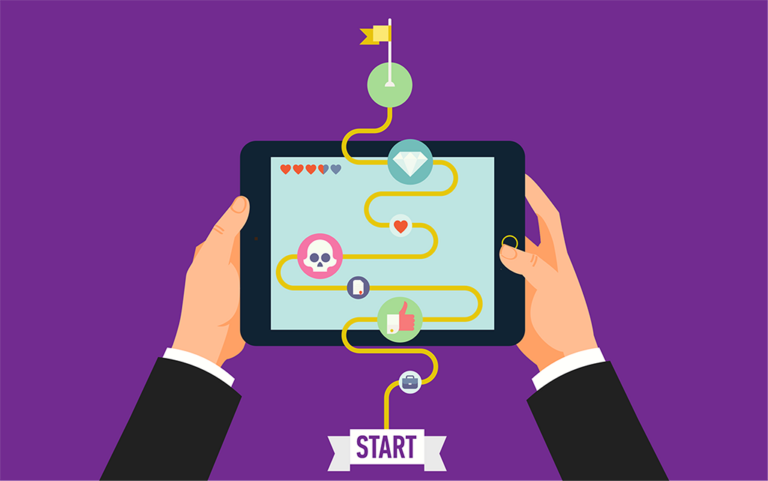5 ways to unlock Gamification using LMS for employee onboarding

Imagine, it’s your first day at work, you are super excited to show up only to sit through a boring video, several manuals and stacks of documents to fill out and after, you are sent through a series of training sessions before ever being allowed to contribute in your new role. All that eagerness and excitement is literally burned to the ground. As an employee, you want to hit the ground running and as an employer, you hired this person to fill an immediate need. So how do you get to a win-win situation for both sides?
Gamification in corporate training and engagement can work wonders for your business. One reality that every business is slowly trying to accept, is the difficulty in getting millennials to be engaged at work. Now more than ever, employee engagement is an important metric in your business. In this blog post, we will show you how to unlock the potential of gamification using an LMS.
So what is gamification in training?
It’s the process of applying gaming designs and concepts to learning or training sessions to make them more engaging and entertaining for your team thus making the employee experience an emphasis.
It’s a no-brainer, given that Millennials grew up playing video games they respond well to gamification. There are a number of ways companies can and are, using gamification to boost engagement in the workplace and create amazing onboarding programs.
First, let’s quickly cover the base and summarise why gamification is a powerful tool for training your employees.
Collaboration
Regular recognition is a critical aspect of engagement and research. It tells us how recognising team members has a significant effect on performance. Gamification enables employers to provide an automatic and consistent system of recognition, which lets employees know that their hard work is noticed and appreciated by their peers, and thus inspires them to give it their all.
On-boarding
Be it retail staff training or hospitality staff onboarding, most of the time the process is the same and with high attrition rates and having seasonal employees, means you need to create a scalable model which is engaging and one that sticks. Gamification ensures employees acquire the knowledge they need to do their jobs, rather than delivering an all-day presentation and/or handing out heavy stacks of informational papers, which improves the onboarding process.
Sales training
If your business requires sales employees to be updated on new features or product launches regularly, conventional ways of training are not only time-consuming but also require remembering a huge amount of information. Sales staff may be able to access documents about new initiatives online, but getting them to spend time learning this information is tricky.
However, if you convert this exercise into a contest between the sales team, then the results will be a different one because competition has always been an important part of driving sales success.
If you want to see companies that successfully leveraged gamification for these aspects, check out the article here.
So how do we add gamification in training?
Now that you know the role of gamification in corporate learning, the next step is the ‘how to’? Chances are you already have a Learning Management System (LMS) in place, but how do you add gamification to it?
Recycle: add in existing sessions
Before getting into reinventing the wheel which can be costly and time-consuming, take a look at your existing materials. Look at where you can insert gamification elements. Look for places where you want employees to solve challenges and change behaviours.
Put your LMS on turbo mode
The plan is to make your LMS more interactive and a tool that employees need to use often. Maybe, add features like deadlines or appointments to your LMS. That way employees will need to access their LMS periodically. This will put training as an on-going activity rather than a back burner or a once-off activity.
Awards & Leader-boards
Look at your training sessions and see where you can add a leader board or points system which eventually culminates into some form of awards or perks. This could also be taken one step further with a formal points system. Like some form of reward for every milestone. The leader board then needs to be published or pushed internally for peer recognition, thus motivating others to do the same.
Change the format of complex sessions
Break up complex topics into simpler and smaller modules and have a quiz/test/game after an employee completes a section. Once they pass a section points are accumulated, and they move to the next section. This approach can be used to see where each employee is within the training process.
Invest in content
Now that you have completed looking into what’s already there, it’s time we bring in the big guns – Create custom interactive eLearning modules focused on learner engagement.

